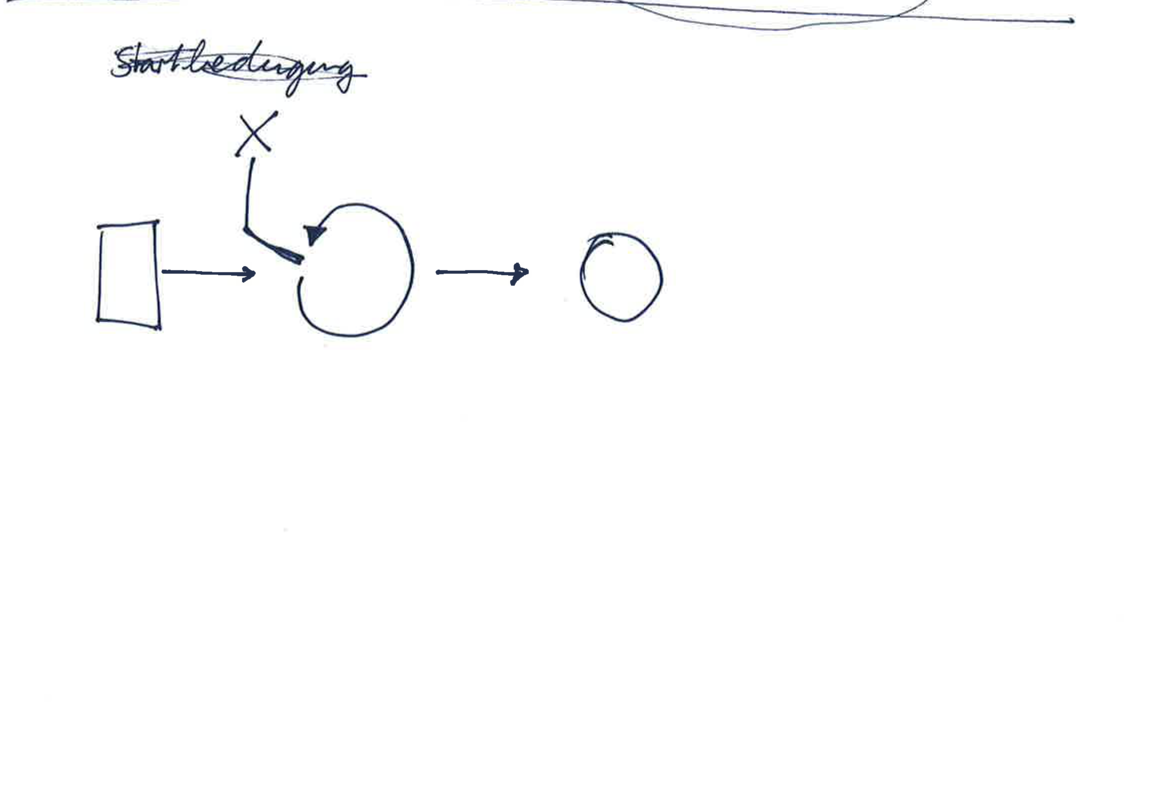An algorithm, drawn by a 23-year-old male student in physics in Switzerland.

Okay, great. The second task: I would ask you to draw how an algorithm works. [laughs] Okay. Um, so any algorithm? Again, just what comes to mind when I ask you this question Okay. So you have the input, in terms of starting conditions, so to speak. You first have some kind of starting conditions. That's this box? That's this box. And it is passed into a construct that consists of different control loops, i.e. if-then-statements, loops or well but also arithmetic operations, if it is numerical data and yeah. This is executed in this loop for a long time, so in this loop something is calculated and there are mechanisms in this loop which look if a certain final condition is fulfilled. And if this final condition is fulfilled, then the algorithm ends. Terminates and gives any output. This one here now makes a circle out of a box. And the end condition is the X? The end condition is the X. Okay. The start condition, what can that be? Ehm... Yeah. So something that you want to process, like pictures or something. It can be start conditions in the sense of environmental variables. Okay, so for an example of, like, the input and the output and the process that goes on in between: what would be a simple example? An image and then an image recognition algorithm runs until you, until the algorithm is sure that it has found something or hasn't found anything and the output is then, so to speak, where in the image is which object. Great.